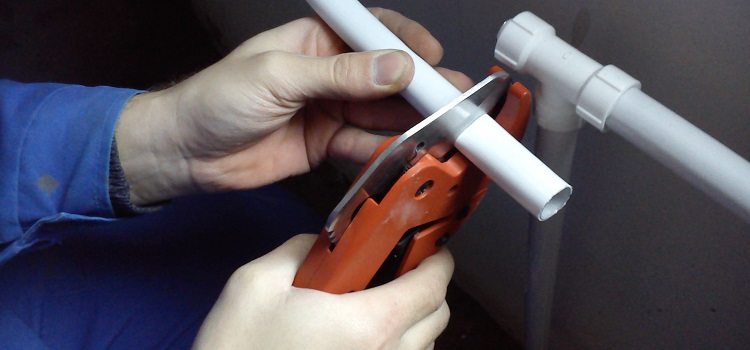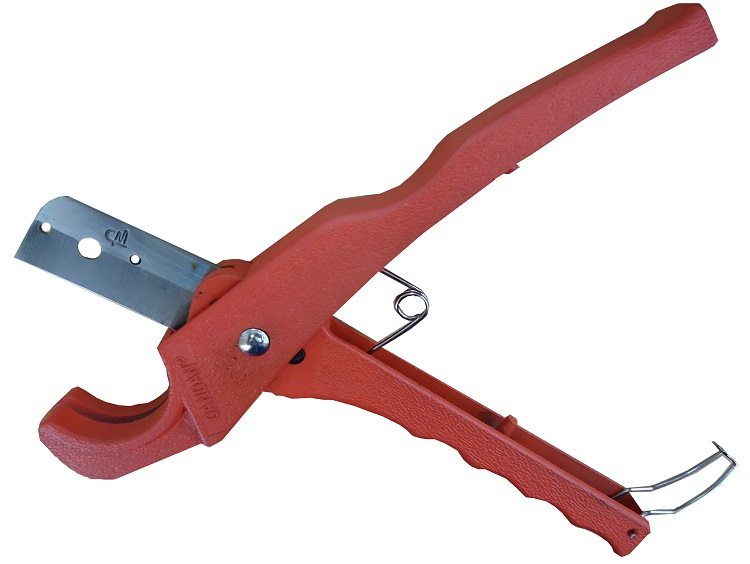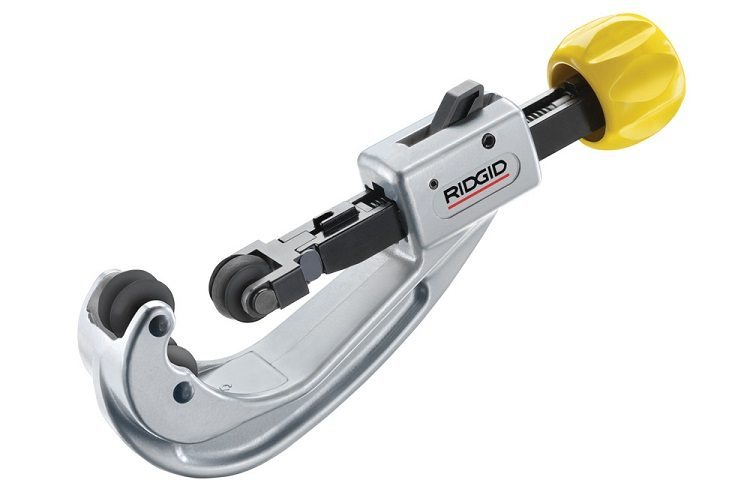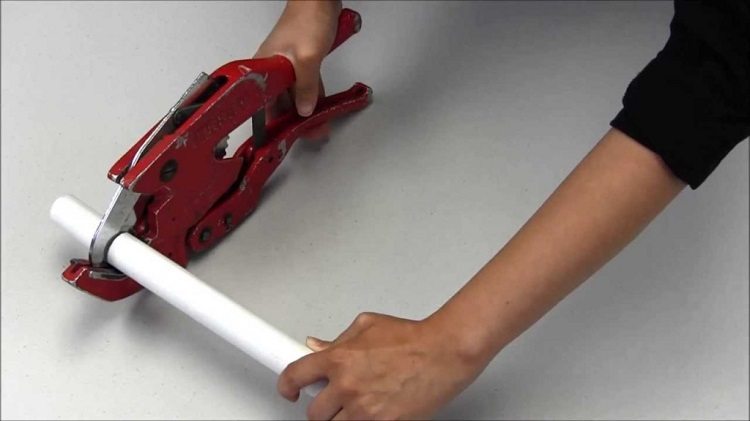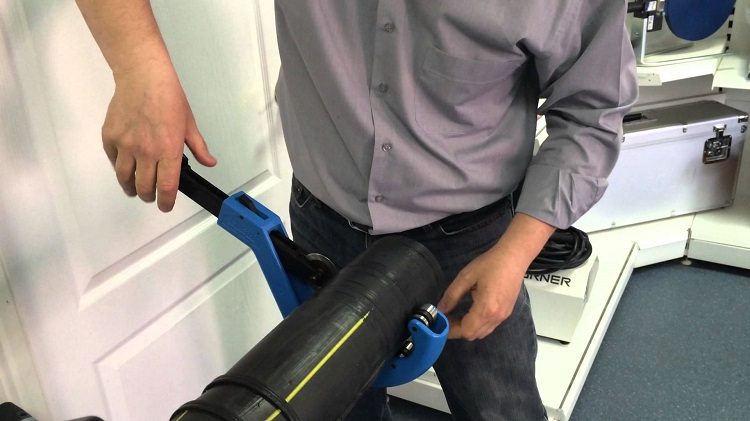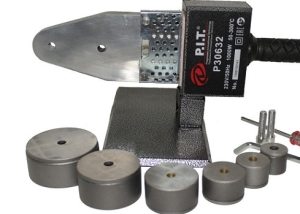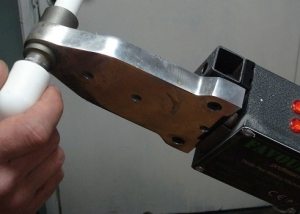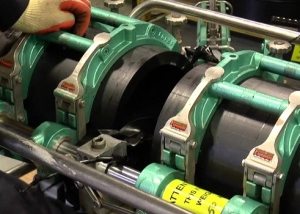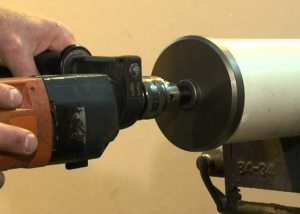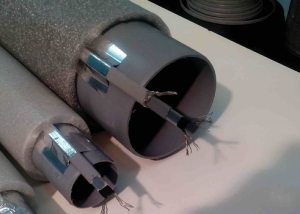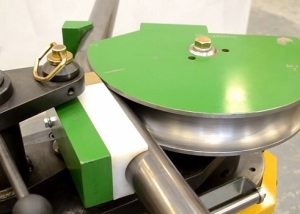Pipe production today has gained solid momentum. Evidence of this is a large number of varieties of models that differ among themselves, in addition to diameter, in the composition of the material. Each species is characterized by its advantages and disadvantages. But according to most experts, the most preferred option is products made of polypropylene, metal plastic and polyvinyl chloride (PVC).
Content
Types of devices for cutting polypropylene pipes
For sale polypropylene pipes straight sections up to 12 meters long or in bays. Therefore, during the installation process, there is often a need for cutting them with subsequent welding.
As you know, money loves an account. With this in mind, the desire of any person faced with such a problem to buy high-quality scissors for cutting polypropylene pipes at the best price looks quite natural. It is important to understand one caveat. If there is a small repair ahead, during which only a few segments of the pipeline will be manufactured, cheap scissors will do. Their blades are made of steel not the most expensive brand. Therefore, compared with high-quality counterparts, they become dull much faster. But why pay more if you use scissors only a few times?
Another thing is if you plan to lay polymer pipes or repair them often (in an extensive household or professional level). In this case, you cannot do without having a quality tool.
In the trading network there are several types of devices for this purpose.
Precision shears for cutting plastic pipes with ratchet mechanism. They are quite simple, reliable and easy to use, and their cost is within the average price range (up to $ 20). Along with the quality of the cutting tool, the diameter of the pipes being cut is also taken into account here. If the value of this parameter does not exceed 35-42 mm, the scissors will be cheaper. When it is planned to cut pipes with a large diameter (63-75 millimeters), the price of a tool of this type increases significantly.
Pistol-shaped automatic scissors. In fact, these are close relatives of the above products. Although such scissors for polypropylene pipes are more expensive, craftsmen give them preference because they can be used to cut pipes of any diameter, even the largest. Automatic scissors are especially relevant where it is necessary to cut a section that runs close to the wall. In this case, the force exerted by the brush to users during operation is reduced.
Roller pipe cutters. This tool is very convenient to use. A low-cost option includes a disk blade that is removed or approaches the surface being cut using a threaded drive. A rotatable tube slides along rollers located on a C-shaped arc. It is mounted opposite the blade. A more expensive version of the roller pipe cutter is made in the form of scissors equipped with a ratchet mechanism.
Electrified pipe cutter. The power tool, in fact, is an advanced design of handheld pipe cutting tools. The only difference is that the scissors for cutting polypropylene pipes do not work from the muscle strength of the operator, but are driven by an electric motor that controls the guillotine and fixing fasteners. The process is very simple. We insert the pipe into the fixing unit, press the “Start” button, wait for the moment when the guillotine knife completes its work and as a result we get a perfectly even cut. And this is without any effort!
The disadvantages of the electrified pipe cutter include its inability to work with products whose diameter exceeds 42 millimeters, since the mounting dimensions do not allow fixing pipes with a large value of this parameter.
Good to know! Pipe cutters and scissors for plastic pipes are hand tools. This means that they are brought into action by the muscular power of the performer. Therefore, carrying out work in a large volume can cause significant fatigue.
Plastic pipe cutting
Products of this type successfully combine the best characteristics of metal pipes, the time of unconditional domination of which has sunk into oblivion, and plastic samples. Plastic pipe - This is nothing more than an aluminum pipe, insulated inside and out by plastic. That is, in addition to the polymer, it contains a more durable material - metal.
This design imposes additional requirements for scissors for cutting plastic pipes. In particular, they must be equipped with hardened wedge-shaped blades. In addition, there are features of the operation of this tool. So, in order to get a good result, during cutting, the scissors must be turned around while the grip is squeezed. But thanks to the presence of a gear rack, cutting plastic is quite simple. The process itself is perfectly controlled visually.
Another obvious plus is that the use of special scissors for cutting pipes made of metal-plastic is a completely waste-free technology. After completing this procedure, you will be spared the need to remove the crumbs and you can begin the assembly process without delay.
When cutting the pipe, it is necessary to bend at the junction. For this, a special device is used - a pipe bender. Without such a simple tool, quality bend the pipe I’m unlikely to succeed in it myself. An attempt to do this involves a risk of damage to the inner aluminum pipe, which also serves as the frame of the product. This will cause premature failure of the entire pipeline.
Important! The use of a tool not intended for working with metal-plastic pipes is also fraught with obtaining an uneven cut at the output. In this case, even if the aluminum component remains intact, the connection of the pipeline elements will be leaky with all the ensuing consequences.
PVC pipe cutting
PVC pipes are among the most popular materials for creating sewage systems. This area of application is due to their resistance to aggressive substances, which are abundant in domestic and industrial waste.
These products are made of plastic. With this in mind, you can use the same tool for cutting them as for working with polypropylene pipes. Therefore, having “got a hand” on such products, the question of how to use scissors to cut a plastic pipe in this case will be irrelevant. But there is one caveat.As mentioned above, polyvinyl chloride pipes are most often used for the installation of systems for the removal of human vital products.
At the same time, the requirements of the corresponding SNiP indicate that the sewage pipeline should have a large diameter. However, here the value of this parameter plays an unimportant role. The peculiarity concerns the final stage of cutting: without the use of scissors for PVC pipes in the form of a roller pipe cutter, high-quality trimming will not work. Therefore, the oxidized crust will remain, which may lead to the unsuitability of the subsequent connection of the pipeline segments.
Leading Brand Products
This segment of the modern market presents products of many manufacturers. However, the products of the following foreign companies are most popular: Rothenberger, Reed and General. Information on the shears they produce for cutting metal-plastic, polypropylene and PVC pipes is presented in the below summary table.
Table 1
| Model / Brand | Diameter cut off pipe mm |
Weight kg | Pipe material |
| Rothenberger ROCUT TC 75 | 0-75 | 1,5 | Polypropylene |
| Rothenberger ROCUT TC 63 | 0-63 | 1,3 | PP plastic |
| Rothenberger roct 63 | 0-63 | 1,26 | PP |
| Rothenberger ROCUT TC 50 | 6-50 | 0,6 | PP plastic |
| Rothenberger ROCUT TC 42 | 6-42 | 0,447 | PP |
| Rothenberger roct 42 | 0-42 | 0,42 | Polypropylene |
| Rothenberger ROCUT S 35 | 6-35 | 0,74 | Polypropylene |
| Rothenberger ROCUT TC 32 | 6-32 | 0,22 | Plastic PE |
| Rothenberger ROCUT 32 | 0-32 | 0,32 | PP |
| Rothenberger ROCUT S 26/42 | 6-42 | 0,85 | Polypropylene |
| Rothenberger ROCUT TC 26 | 6-26 | 0,37 | Polypropylene |
| Reed sc1 | 32 | 0,1 | Thin-walled plastic |
| Reed RSP1 | 42 | 0,4 | Polypropylene, PVC |
| Reed RS7290 | 63 | 1,1 | Plastic PE |
| Reed rs2 | 63 | 1,3 | PP |
| Reed RS1 PLT | 42 | 0,4 | PVC plastic |
| Reed rs1 | 42 | 0,4 | Polypropylene |
| General sush | 0,5 | Plastic (metal plastic) |
After cutting, the cross section of the plastic pipes changes. A calibrator is used to restore it. He not only returns the cut to a round shape, but also removes the inner chamfer. This tool is inserted into the pipe and rotated several times.
Good to know! The knife included in the design of the calibrator will completely clear the pipe of the chamfer only if the cut is made strictly perpendicular to the longitudinal axis of the pipe and the calibrator itself is not skewed.
When choosing a tool for cutting pipes, adhere to the manufacturer's recommendations on the diameter of the cut products, as well as their correct placement relative to the cutting line.
